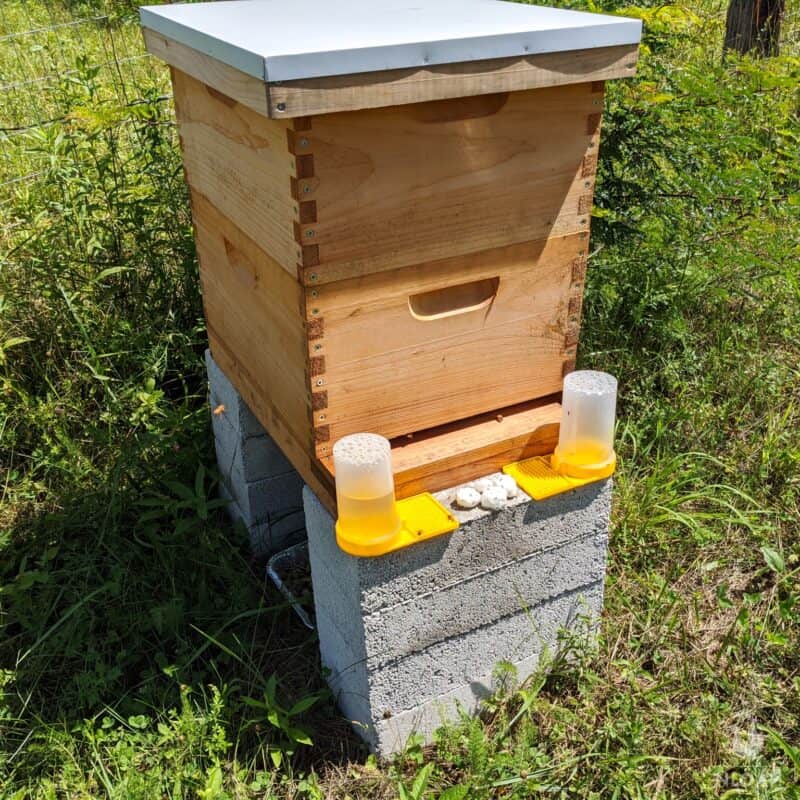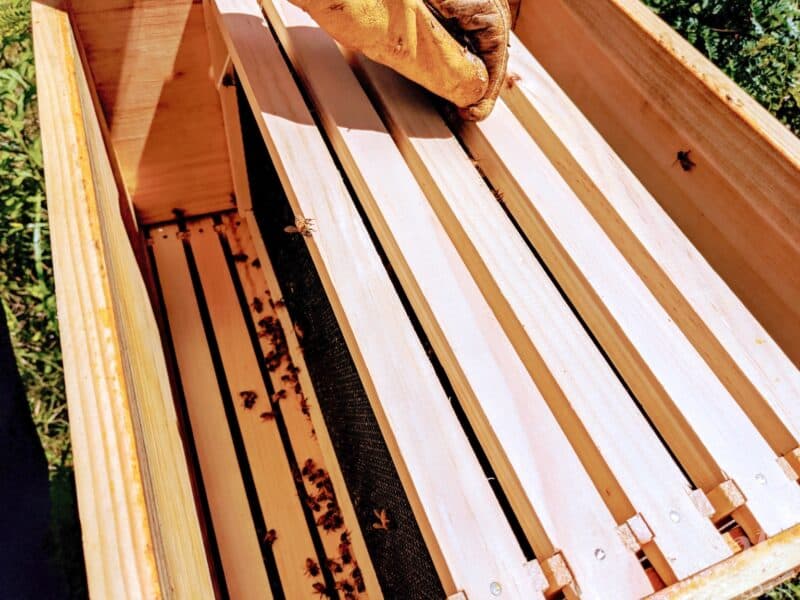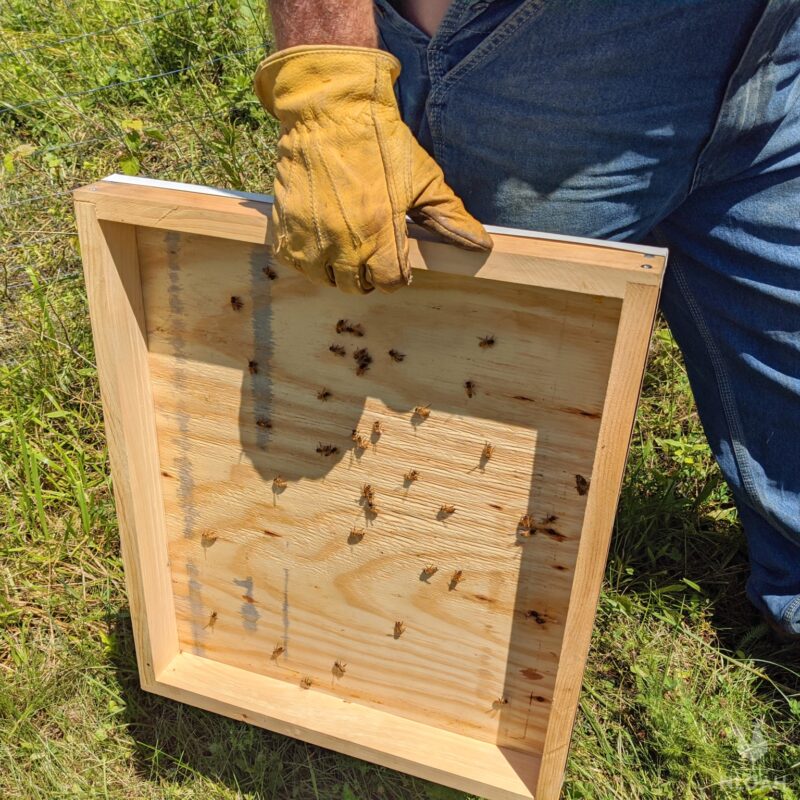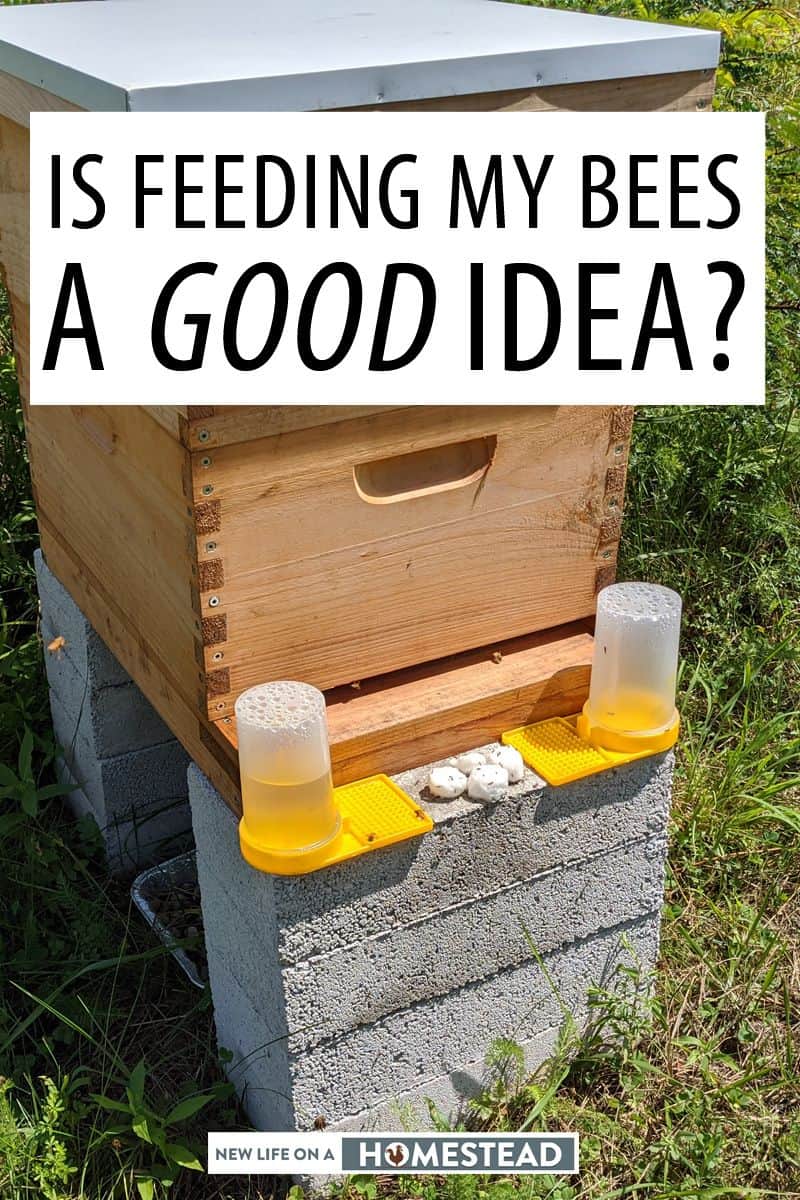Whether or not to feed honeybees is almost always a hotly debated topic among keepers. Some beekeepers opt to feed their colonies year round, others are staunchly against such a practice and only feed as necessary during cold weather months.
Regardless of what breed of honeybees you choose to keep, it is really the climate and environment around the bees which should dictate any supplemental feeding routine.
Feeding your bees is a bad idea in most cases. There is only one good reason to ever feed honey bees, because they will starve without human intervention going into the winter months through the early spring.

However, if the bees cannot gather enough food for themselves and are not provided with adequate and healthy supplements, they will either flee their respective bee boxes or die of starvation.
How Do Bees Feed Themselves During The Winter?
A robust bee colony may produce enough nectar (which becomes honey when ripened) to feed themselves almost regardless of the climate they live in or the natural environment around them.
We never take all of the honey the bees produce (or any honey of a new colony established past June) during their first year. This practice allows the honeybees to garner the carbohydrates and protein they need from the most natural food source and negate the need to rely upon artificial forms of sustenance.
The carbs consumed from nectar and the protein from pollen help keep the bees healthy and active during the cold weather months.
Pollen consumption is also tied to bee brood production. The p-courmaric acid contained in pollen may help detoxify and regulate the immune system of the honeybee.
Nectar is not only a food source that allows the bees to remain full of the energy needed to continue their work, but also helps to keep their hive boxes warm – which in turn can stave off a disastrous cold brood tragedy from occurring.
The unripened honey is comprised of organic acids, amino acids. enzymes, vitamins, volatile oils, glycosides, alkaloids, metal ions, and terpenoids that may help boost the immune system of honeybees as well as deter destructive parasites.

Why You Shouldn’t Feed Your Bees … Unless They Are Near Starvation
When a honeybee does not need to follow its natural instincts to go out in search of food, the hive is no longer a useful agricultural tool.
Placing beehive boxes in your fruit grove and garden plots will not yield the increased pollination results you desire because the little insects will get lazy.
Instead of flying out of the hive each day to pollinate, the honeybees will simply wait around to be fed by human hands.
Never, and I mean never, introduce honey from another hive, or worse yet, commercially manufactured honey into the supplemental food source. The possibility of contamination and artificial ingredient exposure that may cause harm is just too high.
No matter how clean you keep your hive boxes, a certain amount of microorganisms like fungi, bacteria, and yeast will exist. While some of these microorganisms are actually healthy for the bees or present a mostly benign exposure issue, some can be deadly.
What microorganisms possess the ability to grow in the beehive boxes will be significantly impacted by the pH levels inside of the colony’s food source.
Typically, refined sugar water will have a pH level of roughly 6.0. The honey that forms from the bee nectar ranges from about 3.2 to a 4.5 pH level.
Dangerous to deadly beehive problems such as Chalkbrood, Nosema, Varroa mites, and EFB all not only live but reproduce and thrive in Ph levels that are more similar to those found in sugar water than nectar – honey.

What To Feed Your Bees If It Becomes Necessary
The overall health of the honeybee can be decidedly less robust when fed on a steady diet of sugar water, sugar syrup, high fructose corn syrup, pollen patties, or marshmallows.
Not only are these non-natural supplemental food sources not going to provide the same high level of nutrients as nectar and pollen, they can also draw ants and other pests into the hive boxes.
When supplemental feeding may become necessary during winter months through the early spring, infusing some stored honey produced previously be the same hive, or herbs and essential oils such as chamomile, thyme, lemongrass, spearmint, and wintergreen into the sugar syrup can help give them a strong healthy boost until spring flowers once again emerge.
The sugar used to make sugar water or a sugar syrup must be refined, as honeybees do not possess the ability to properly digest raw sugar. To reduce the pH level in a sugar water recipe consider stirring in a pinch or two of cream of tartar or lemon juice.
Stocking up on pH test strips will help you gauge and record the pH levels in the supplemental food given to the honeybees and any negative or positive colony activity that results.
One study from Alaska was referenced when I first researched adding in the acidic ingredients to a sugar water recipe to reduce pH levels. Unfortunately, that link was no longer active and I could not find any other cited sources on topic.
I learned the trick from an old country beekeeper who swore by it. But, I would remiss if I did not note that some natural beekeeping fans like myself have posted comments on honeybee forums stating the acidic ingredients mixed into the sugar water could reduce the lifespan of the honeybees.
I have not experienced any noticeable losses, but I rarely feed our honey bee colonies.
I highly recommend using a beehive entrance reduce when offering supplemental food to the honeybee colony to deter “robbing” from larger insects or bees from another hive – either your own or that of a wild colony.
How Do You Know When To Stop Feeding The Bees?
Once the world begins to come alive again during the early spring it is time to stop giving your honey bees supplemental feed so they begin the cycle of pollinating and storing nectar.
During the weekly hive check, pay careful attention to any honeycomb building which is occurring and the nectar stores inside the hive. Once the bees are engaged in building new honeycombs, they should no longer need your help.
This type of work requires a copious amount of energy, the type that sugar water or sugar syrup alone (even when infused with herbs or essential oils) really cannot provide.
Check the hives a couple of times a week for about two weeks to ensure the honeycomb building has not lagged or stopped and to make sure that nectar and pollen stockpiles still exist… or have grown.
Although the honey bees will not like it, you can also gently pick up the hive boxes to see if they feel heavy. If the bees are making honey, the hive box will definitely not feel light.


Tara lives on a 56 acres farm in the Appalachian Mountains, where she faces homesteading and farming challenges every single day, raising chickens, goats, horses, and tons of vegetables. She’s an expert in all sorts of homesteading skills such as hide tanning, doll making, tree tapping, and many more.
